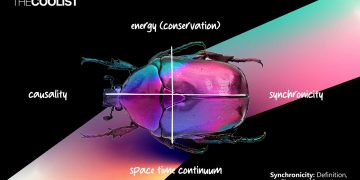Introduction: The Growing Impact of Digitalization on the Environment
The digital revolution has transformed nearly every aspect of modern life. From smartphones and laptops to cloud computing and social media, technology has made it easier than ever to stay connected, work remotely, access information, and enjoy entertainment. However, this convenience comes at a significant environmental cost.
As more people around the world embrace digital lifestyles, the energy consumption associated with our devices and online activities continues to rise. This, in turn, leads to a growing “electronic carbon footprint”—the carbon emissions resulting from the manufacturing, operation, and disposal of electronic devices and the energy consumed by data centers that support online services.
In response to this issue, there is increasing focus on creating a sustainable digital lifestyle—one that balances the benefits of modern technology with the need to reduce its negative environmental impact. This article will explore how technology can help consumers reduce their electronic carbon footprint and adopt more sustainable habits in their digital lives.
Understanding the Electronic Carbon Footprint
Before we dive into how technology can assist consumers in reducing their environmental impact, it’s important to understand what the “electronic carbon footprint” encompasses. The electronic carbon footprint refers to the total amount of carbon dioxide (CO2) emitted throughout the lifecycle of digital devices and services, from manufacturing to disposal. This includes:
- Manufacturing: The production of electronics, such as smartphones, computers, and other gadgets, requires significant amounts of energy and raw materials. Mining for minerals, assembling devices, and packaging them all contribute to the carbon emissions associated with electronics.
- Energy Consumption: Once in use, electronic devices rely on electricity to operate. The energy used to power devices and data centers contributes directly to carbon emissions, particularly if the electricity is generated from non-renewable sources.
- Disposal and E-Waste: When electronic devices are no longer in use, they often end up as e-waste, which is notoriously difficult to recycle. Improper disposal and incineration of e-waste lead to additional CO2 emissions and environmental degradation.
As more devices are produced, used, and discarded, the electronic carbon footprint continues to grow. The key to mitigating this impact lies in both reducing consumption and improving the sustainability of digital technologies.
How Technology is Helping Reduce the Electronic Carbon Footprint
- Energy-Efficient Devices: One of the most significant ways technology is helping consumers reduce their electronic carbon footprint is by developing more energy-efficient devices. Manufacturers are increasingly focused on creating products that consume less power without sacrificing performance. For example, energy-efficient processors, low-power displays, and improved battery technologies are all contributing to reducing the energy consumption of personal electronics.
- Smartphones and Laptops: Today’s smartphones and laptops are designed to use significantly less energy compared to older models. Battery-saving technologies allow devices to run longer on a single charge, reducing the need for frequent recharging, which translates to less electricity consumption.
- Smart Home Devices: Devices like smart thermostats, energy-efficient light bulbs, and smart appliances use sensors and algorithms to optimize energy usage in real time. By adjusting heating, cooling, lighting, and appliance settings based on your habits and the time of day, smart home devices can help reduce the overall energy consumption of your home.
- Cloud Computing and Virtualization: Cloud computing has become an integral part of modern digital life, allowing consumers and businesses to store data, run applications, and access services remotely. While cloud data centers do require large amounts of energy to operate, the use of shared infrastructure and resources allows for greater efficiency than traditional on-premise servers.
- Efficiency through Shared Resources: Cloud providers like Google, Amazon, and Microsoft have invested heavily in making their data centers more energy-efficient. By pooling resources across many users, cloud services can run at much higher utilization rates, leading to lower energy use per individual user.
- Data Center Sustainability: Leading cloud providers have committed to achieving carbon-neutral operations by sourcing renewable energy and improving the efficiency of their data centers. This shift toward renewable energy sources and more efficient infrastructure helps reduce the carbon footprint of digital services significantly.
- Digitalization of Services: Many industries are moving from physical to digital formats, which can help reduce resource consumption and emissions. For instance:
- Digital Payments: Digital payment systems reduce the need for physical bank branches, paper-based transactions, and cash handling. By minimizing the use of paper and transportation associated with financial transactions, digital payments contribute to a smaller carbon footprint.
- Telemedicine and Virtual Education: The shift to virtual consultations in healthcare and online learning in education has reduced the need for travel and in-person meetings, contributing to a reduction in transportation-related carbon emissions.
- E-Waste Recycling and Circular Economy: Proper disposal and recycling of electronic devices can significantly reduce their environmental impact. Advancements in technology are making it easier for consumers to recycle old gadgets responsibly, reducing the harmful effects of e-waste.
- E-Waste Recycling Programs: Many companies and organizations have started offering e-waste recycling programs to help consumers dispose of their old devices responsibly. These programs ensure that electronic devices are recycled in an environmentally safe manner, reducing the carbon emissions associated with improper disposal.
- Modular and Repairable Devices: Some manufacturers are designing modular devices that allow consumers to replace or upgrade individual components rather than purchasing an entirely new device. This reduces electronic waste and extends the lifespan of products, resulting in fewer emissions from manufacturing and disposal.
- Sustainable Data Storage Solutions: The explosion of data generated by digital interactions—whether it’s photos, emails, videos, or cloud-based applications—demands vast amounts of data storage. To mitigate the environmental impact of storing this data, companies are focusing on making storage solutions more energy-efficient.
- Energy-Efficient Servers: Data centers that store massive amounts of data are being optimized for better energy usage. Many companies are adopting technologies like liquid cooling, renewable energy, and more energy-efficient server hardware to lower the carbon footprint of data storage.
- Green Data Centers: Many large tech companies, including Google and Facebook, have transitioned to using renewable energy to power their data centers. These green data centers are designed with energy efficiency in mind and use sustainable materials and technologies to minimize environmental impact.
- Sustainable Digital Consumption: Consumers themselves can play a vital role in reducing their electronic carbon footprint by adopting more sustainable digital consumption habits. For example:
- Conscious Device Usage: Reducing the frequency with which devices are replaced and using energy-efficient settings (such as turning off devices when not in use or using energy-saving modes) can significantly lower personal energy consumption.
- Reducing Streaming Quality: While streaming high-definition video and music is a significant part of digital life, lowering the quality of streamed content can reduce the amount of energy consumed by servers and the bandwidth used to deliver content. This small change can have a collective environmental benefit when practiced by millions of users.
- Digital Decluttering: Storing unnecessary data in the cloud or on devices requires energy. Periodically cleaning up old files and unsubscribing from digital subscriptions or services that aren’t needed can help reduce the overall demand for digital storage and cloud services.

The Future of Sustainable Digital Living
Looking ahead, there are several trends that will shape the future of sustainable digital living:
- Carbon-Neutral Digital Infrastructure: As more tech companies commit to sustainability, we can expect continued investment in carbon-neutral data centers and renewable energy-powered infrastructure. The goal is to ensure that digital services—ranging from cloud storage to online streaming—can be provided with minimal environmental impact.
- Artificial Intelligence for Sustainability: AI and machine learning are playing an increasingly important role in optimizing energy use, from managing smart homes to improving the efficiency of data centers. These technologies will continue to help consumers and companies reduce their environmental impact.
- Sustainable Product Design: As consumer demand for eco-friendly products grows, we can expect manufacturers to design devices that are not only energy-efficient but also made from sustainable materials and built for easy recycling.
- Green Certifications: As sustainability becomes a priority, tech companies may adopt certifications to indicate that their products, services, and operations meet high environmental standards. This could help consumers make more informed choices when purchasing electronics.
Conclusion: Embracing a Sustainable Digital Future
The growing demand for digital products and services presents significant environmental challenges, particularly in terms of energy consumption, e-waste, and carbon emissions. However, technology is also a powerful tool that can help mitigate these issues. Through innovations in energy-efficient devices, cloud computing, e-waste recycling, and sustainable consumption practices, both companies and consumers can play a role in reducing their electronic carbon footprint.
As we move forward, the goal will be to embrace a digital lifestyle that minimizes environmental harm without sacrificing the benefits that technology brings to our lives. By making informed choices and supporting sustainable practices, we can ensure that the future of digital living is both efficient and environmentally responsible.
















































Discussion about this post